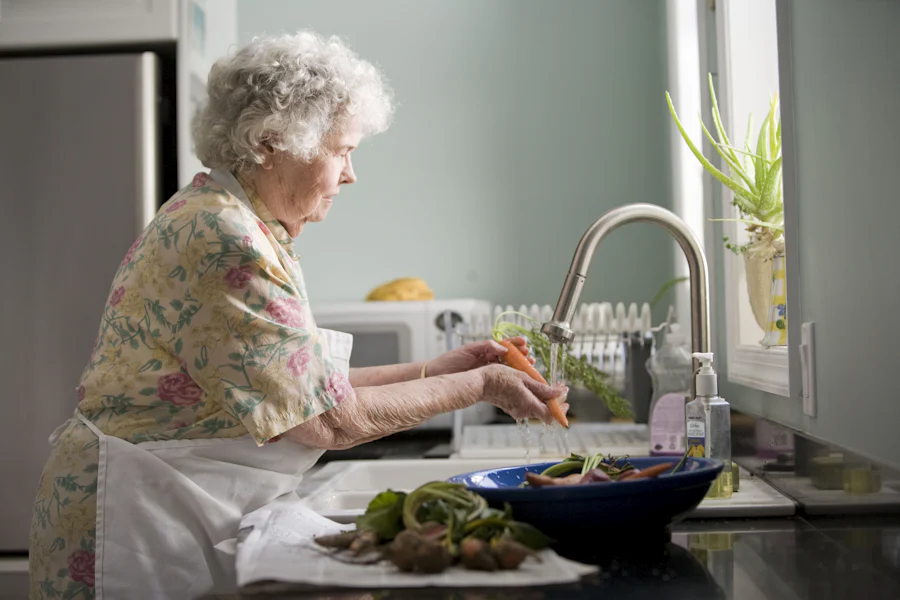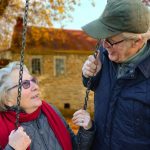Fear of falling is a prevalent concern among older adults, significantly impacting their quality of life and overall well-being. This persistent worry can lead to a cycle of reduced activity, decreased independence, and increased fall risk. In this comprehensive guide, we’ll explore the complexities of fear of falling and provide practical strategies to help seniors regain confidence and maintain an active lifestyle.
Understanding Fear of Falling
Fear of falling is more than just a fleeting concern; it’s a persistent apprehension about the possibility of falling that can profoundly affect an older adult’s daily life.
This fear is characterized by several key attributes:
- Apprehension caused by the unpredictable nature of falls
- Unease related to one’s vulnerability
- High vigilance related to the environment
- Concern about potential harm after fall events
It’s important to note that fear of falling can develop even in seniors who haven’t experienced a fall, affecting up to half of older people living in the community.
Causes and Risk Factors
Several factors contribute to the development of fear of falling in the elderly:
- Previous falls or near-falls
- Direct or indirect experiences with falls
- Medical conditions affecting balance or mobility
- Environmental hazards
- Decreased muscle strength and flexibility
- Cognitive decline or memory issues
Understanding these risk factors is crucial for developing effective prevention strategies and addressing the root causes of fear.
Consequences of Fear of Falling
The impact of fear of falling extends far beyond the immediate concern of physical injury. It can lead to a cascade of negative outcomes:
- Activities curtailment: Seniors may limit their daily activities to avoid potential fall situations.
- Reduction in radius of living: The fear can cause older adults to confine themselves to smaller, “safer” spaces.
- Restricted freedom: Overall independence may decrease as seniors avoid certain activities or environments.
- Limited social activities: Fear of falling can lead to social isolation and reduced participation in community events.
- Decline in physical health: Reduced activity can result in muscle weakness, especially in the spine and hip areas, leading to balance issues and increased fall risk.
These consequences can create a vicious cycle, where fear leads to inactivity, which in turn increases the risk of falling, further reinforcing the fear.
Strategies to Overcome Fear of Falling
Breaking the cycle of fear and inactivity is essential for maintaining seniors’ quality of life. Here are some effective strategies:
- Exercise and physical activity: Regular exercise is crucial for maintaining strength, balance, and flexibility. Start with simple seated exercises and gradually progress to standing exercises with support.
- Home modifications: Make the living environment safer by removing tripping hazards, improving lighting, and installing grab bars in key areas.
- Balance training: Incorporate specific balance exercises into daily routines to improve stability and confidence.
- Cognitive behavioral therapy: Address the psychological aspects of fear through therapy sessions focused on changing thought patterns and behaviors.
- Education and awareness: Provide information about fall prevention and the importance of staying active to empower seniors.
- Gradual exposure: Slowly reintroduce activities that have been avoided, starting with low-risk situations and building confidence over time.
- Use of assistive devices: Properly fitted walking aids can provide additional support and confidence during daily activities.
Support Systems and Resources
A strong support network is crucial for helping seniors manage and overcome their fear of falling:
- Family and caregivers: Encourage loved ones to provide emotional support and assistance with daily activities when needed.
- Healthcare professionals: Regular check-ups with doctors, physical therapists, and occupational therapists can address underlying health issues and provide tailored exercise programs.
- Community programs: Many communities offer fall prevention classes and support groups specifically designed for seniors.
- Technology: Consider using personal emergency response systems or smartphone apps that can track movement and provide quick access to help if needed1.
- Peer support: Connecting with other seniors who have overcome similar fears can provide inspiration and practical advice.
The Role of Healthcare Providers
Healthcare professionals play a vital role in addressing fear of falling among the elderly:
- Regular assessments: Conduct thorough evaluations to identify fall risks and fear of falling during routine check-ups.
- Personalized interventions: Develop tailored strategies based on each individual’s specific needs and risk factors.
- Medication review: Assess and adjust medications that may contribute to fall risk or exacerbate fear of falling.
- Referrals: Connect seniors with appropriate specialists, such as physical therapists or mental health professionals, when necessary.
- Education: Provide clear, actionable information about fall prevention and the importance of maintaining an active lifestyle.
By implementing these strategies and leveraging available support systems, seniors can work towards overcoming their fear of falling and reclaiming their independence. It’s important to remember that while not every fall can be prevented, a proactive approach can significantly reduce the risk and impact of falls on an older adult’s life.
Fear of falling doesn’t have to be an inevitable part of aging. With the right tools, support, and mindset, seniors can maintain their mobility, independence, and quality of life. By addressing both the physical and psychological aspects of this fear, we can help older adults break free from the cycle of fear and inactivity, enabling them to lead fulfilling and active lives well into their golden years.



